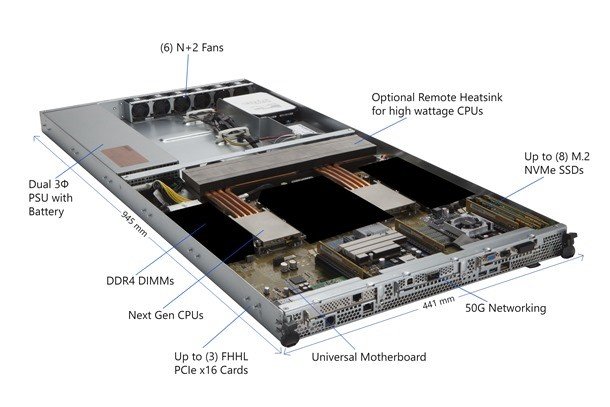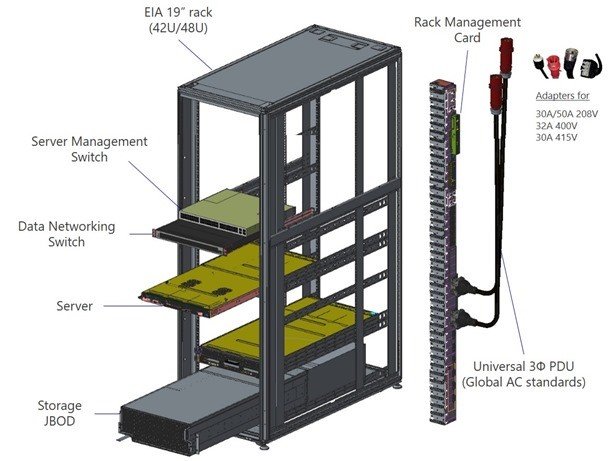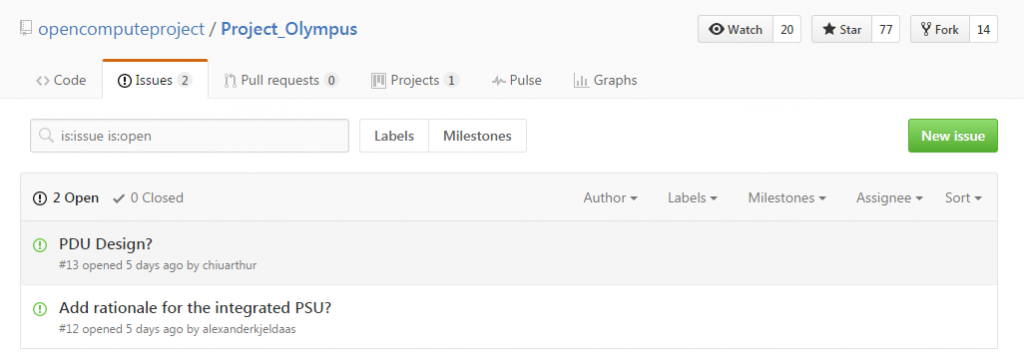There was a time when “open source” and “Microsoft” were two words that did not get along, at all. Bill Gates when he was leading the Redmond Company said, even though the free software should be part of the ecosystem, the General Public License (GPL, licenses that used to rule most of the open source projects) has a “Pac-Man-like nature” that was destroying the “healthy ecosystem” for companies. Or even later when he said that the open source software is a “New Communism” (in a despicable way, of course).
Well, for a while now seems those type of statements from Microsoft are just part of an old tale. Microsoft recently announced that the release of the Project Olympus, their new hyperscale cloud hardware design and a new model for open source hardware development with the Open Compute Project (OCP) community.
The building blocks that Project Olympus will contribute consist of a new universal motherboard, high-availability power supply with included batteries, 1U/2U server chassis, high-density storage expansion, a new universal rack power distribution unit (PDU) for global datacenter interoperability, and a standards compliant rack management card.
But what does it mean? And why is it important to us? Here are a couple of reasons:
1. Azure and Office 365 Will be running on this Hardware
Microsoft is planning to adopt this open source initiative on their own datacenters (they already have around 90% of the servers with an OCP specification contribution), which will empower millions of users around the world currently using Office 365 and Azure.
Even though this, by definition of the Microsoft’s cloud platform, should not concern or provide a significant change into the O365 or Azure users since you don’t actually interact with the hardware you are using, it is a big leap on how Microsoft engages the customers.
The Big part of the “mystery” behind the black curtain on Microsoft’s cloud hardware will be unveiled. Not only we will know what type of hardware they will be using, but also the community will be part of the development and how that hardware interacts with your environment (for instances, power consumption, cooling and so on).
This is the concept behind the rack, components and its interconnections. We imagine each of Microsoft’s datacenters will have thousands of these:
2. Hardware Designs are Not Complete, but that’s the Idea!
Microsoft states that the current designs are only 50% complete, but that is actually “by design”. Why? Because the community can have a saying regarding those components, adjust them and make some modifications. This way, anyone with a good spirit and knowledge, can apply the recommendations that suit best in the Project Olympus and, of course, share that with the community.
Microsoft biggest challenge about the OCP community is that, when people are providing new designs to the OCP, they need to provide it 100% complete so that the community can approve it or not. Therefore, the whole sense of an active and participating community is actually being minimize.
With this approach, Microsoft enforces the idea of the open source, where each of one of us can provide adjustments and different designs of the same base product.
“Microsoft is opening the door to a new era of open source hardware development. Project Olympus, the re-imagined collaboration model and the way they’re bringing it to market, is unprecedented in the history of OCP and open source datacenter hardware,” said Bill Carter, Chief Technology Officer of the Open Compute Project Foundation.
All the Project Olympus files are in Github, under this link right here. You can also see in the “Issues” section how people are already contributing.
3. The OCP Initiative will be a Standard
The Open Compute Project (OCP) was born as a Facebook initiative in 2011, as their initiative to share datacenter products. A couple of years in research generated important breakthroughs regarding power usage effectiveness and caught the attention of several other companies about this initiative.
To this date, besides Facebook, some of the biggest names in the market are part of the OCP, like the following: Intel, Dell EMC, Nokia, Google, Apple, Microsoft, Seagate Technology, Rackspace, Ericsson, Cisco, Juniper Networks, Goldman Sachs, Fidelity, Lenovo and Bank of America.
Do you feel like there’s a big name missing here? Yes, Amazon it is not part of the Open Compute Project.
With all those big names, it is safe to assume that the OCP initiative will provide standards, among different designs, for the biggest datacenters in the world. And why not thinking any other mid-size company can use this standard as well in the near future?
Do you think it is a good idea to have in your own datacenter Open Source Hardware platform? Will you feel comfortable?







